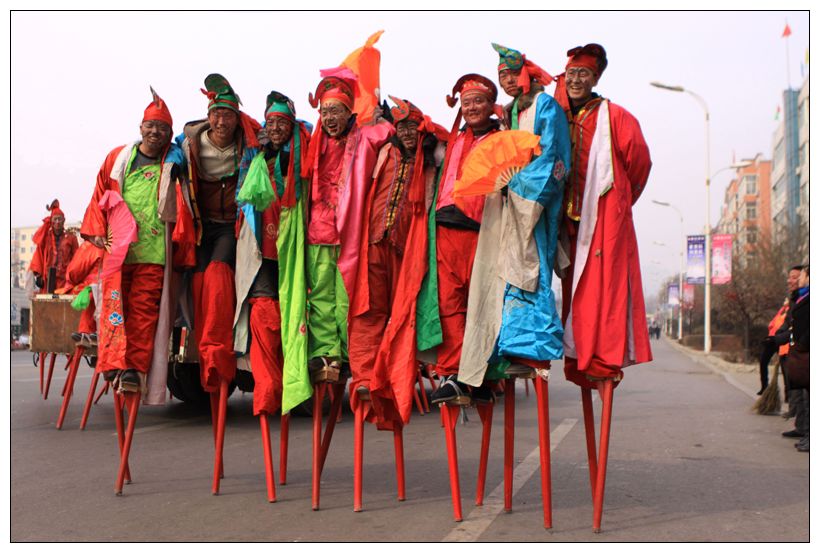
The History of Stilts-Walking
高跷的历史
Stilts refer to a pair of long,slender poles each equipped with a raised footrest to enable the user to walk elevated above the ground. In China, there is an old custom called “walking on stilts”. It is a performance that employs two lengths of wooden sticks over three meters long to one's feet and walking on them. It is also termed “tied-on long feet”. This performance can be traced back to very ancient origins. It is said that there was once a man named Lanzi in the state of Song who entertained the first Song emperor with his feet of walking and running with two wooden poles taller than himself attached to his lower legs. In the Han Dynasty, stiltwalking, then calledstilts skill, began to popularize among the public. In the Song Dynasty,it was changed to “stepping-stilts”and the name “stilts-walking” was finally adopted in the Qing Dynasty. Through several thousand years of development, stilts-walking has greatly improved in style and become an important part of Chinese festive culture.
高跷指一对细长雪仗各配备一凸起搁脚板,以使坐在上面的人可以放脚。在中国,有一个古老的习俗叫“踩高跷”。它是用超过三米多长的两段木棒,一个人走在其中表演。它也被称为“捆绑式长脚”。这种习俗可以追溯到很古老的起源。有人说,宋代一个叫兰齐的人,使宋代第一个皇帝的脚踩在两个木棍上行走,让他的身高比较高。在汉代,踩高跷,然后被称为高跷技能,开始在公众中普及。在宋代,又改为“踏高跷”并在清朝命名为“踩高跷”。经过几千年的发展,踩高跷在风格上有很大的提高,已成为中国节日文化的重要组成部分。











